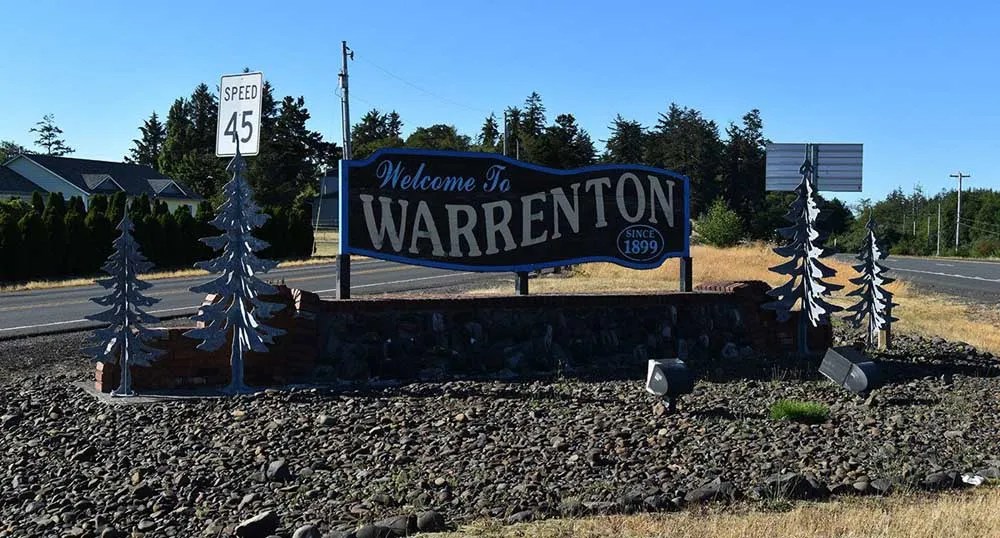IN THE GARDEN: Know your fertilizers for happy plants
Published 5:00 pm Wednesday, May 26, 2004
Indications are that we could be in for a dry summer.
Trending
One way to give your garden a good start for the season is by fertilizing, if your plants need it. Adding nutrients to your garden soil gives your plants a boost and makes them better able to withstand summer weather fluctuations, as well as to survive on a less frequent watering schedule. A healthy plant is easier to care for because it is more resistant to insects and disease than a weak plant.
With some help from the Oregon State University Extension Service, let’s consider some fertilizing options and how best to use the amendments. There are processed or “chemical” fertilizers and “organic” fertilizers. According to the OSU Master Gardener handbook, “Sustainable Gardening,” processed fertilizers are manufactured or are refined from natural materials such as rock, animal or petroleum products. Nutrients are concentrated in industrial processes to make them more available to plants. Ammonium sulfate, ammonium phosphate and potassium sulfate are examples of processed fertilizers. The fertilizers that you buy for your garden or lawn, such as 10-10-10, are usually composed of mixtures of these types of fertilizers. Nutrients are usually immediately available to plants and are quite concentrated. Packaged processed fertilizers generally cost less per pound of nutrients than packaged organic fertilizers.
Organic fertilizers are composed of natural materials such as mined minerals, animal or plant materials, with little or no processing. Some examples include manure, cottonseed meal, rock phosphate, fish byproducts, oyster shell and blood meal. Through natural biological and chemical processes in soil, nutrients are released slowly and are relatively low in concentration when compared to processed fertilizers. Organics range from relatively cost free manure from a backyard horse, cow or rabbits to expensive packaged products such as bagged bat guano or blood meal.
Trending
Whether chemical or organic, the only nutrients that plants can take up must be in solution and passed into the soil through watering, weathering or biological decomposition. Nutrients in processed fertilizers are usually immediately available to plants. Organic fertilizer nutrients are not all as quickly available; they release some of their nutrients more slowly, over the course of weeks or months. If plants don’t use the organic or processed fertilizer nutrients, the elements can be lost and run off to surface or ground water.
As you choose your fertilizers, organic or chemical, be aware of the essential plant nutrients available. A fertilizer’s N, P and K ratings will tell you how much nitrogen, phosphorus and potassium are available, and must, by law, be listed on the product. A fourth number is sometimes available that represents the amount of sulfur in the mix. For instance, the fertilizer 16-16-16 contains 16 percent each of nitrogen, phosphorus and potassium.
A fertilizer formulation does not necessarily contain all four nutrients. For instance, a 21-0-0-24 fertilizer contains 21 percent nitrogen, no phosphorus or potassium and 24 percent sulfur. This fertilizer would be useful for soils needing only nitrogen or nitrogen and sulfur, applied to help acidify soil. The numbers on fertilizer products can help home gardeners determine which fertilizer formulation is the better buy, as well. For example, in a nitrogen fertilizer, a product containing 5 percent nitrogen should not be priced more than one-quarter the cost of a product containing 21 percent nitrogen.
When you fertilize, you might want to keep in mind the following terms – band, broadcast and sidedress. Banding is placing the fertilizer in a trench about three inches deep. Sow seeds an inch-and-a-half to two inches above and to the side of the fertilizer. The plant roots quickly absorb the nutrients and grow rapidly. When you broadcast fertilizer, you scatter it uniformly over the surface – this is the most common method advised.
To sidedress is to scatter the fertilizer material close to the plants, but off the leaves or stem to prevent burning. Nitrogen is very soluble and does not need to be mixed with the soil, as water will carry it down to the roots. On that note, do be careful not to add too much nitrogen, or you can burn plants by increasing the amount of mineral salt in the soil. You can discourage flower growth in favor of an abundance of leaves. And, if the extra nitrogen isn’t taken up by the plants, it can be leached into the groundwater as the pollutant nitrate. Even a little too much nitrogen can cause damage to nearby water sources. OSU scientists have discovered that a level of nitrogen-based compounds considered safe for human drinking water is enough to kill some species of amphibians.
Cathy Peterson belongs to the Clatsop County Master Gardener Association. “In the Garden” runs weekly in Coast Weekend. Please send comments and gardening news to “In the Garden,” The Daily Astorian, P.O. Box 210, Astoria, OR 97103 or online to peterson@pacifier.com









